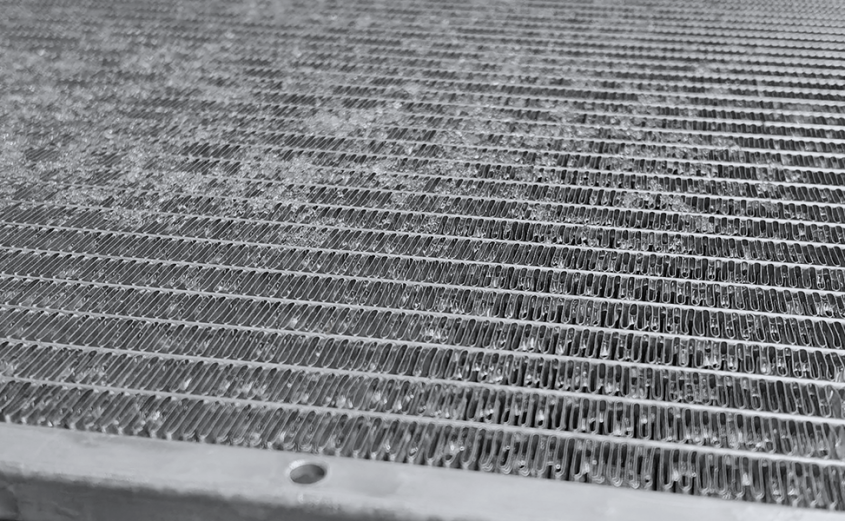
Cryogenic systems operate at extremely low temperatures, usually below -150°C, and are used in applications spanning the aerospace and medical research fields to liquefied natural gas (LNG) processing and superconducting technology. Within these systems, it is imperative to attain precise thermal management for process integrity as well as equipment life. Traditional heat exchangers, while functional in usual refrigeration cycles, are prone to failure in the severe conditions of cryogenic operations. Microchannel heat exchangers, though, have one intriguing alternative—coupling high thermal effectiveness, compactness, and mechanical strength to address the challenges of ultra-low-temperature operations.
One of the most striking advantages of microchannel technology in cryogenics is its ability to maintain the temperature of the coil surface uniformly distributed. For fluids like liquid nitrogen or liquified gases, even small temperature imbalances lead to phase separation, inefficiency, or structural stress. Microchannel tube design with internal multiple channels inside the tube ensures even distribution of flow, thereby avoiding hotspots and ensuring consistency of heat transfer—a advantage that translates directly into system reliability.
In cryogenic cooling loops, the water coil plays an important role in pre-cooling processes or second-stage heat exchange processes. Microchannel types are unique compared to standard coils, which are produced using copper or stainless steel, because microchannel types utilize aluminum alloys that retain high mechanical properties at cryogenic temperatures. Aluminum’s good thermal conductivity in conjunction with microchannel tubes’ geometry optimization allows efficient and high-speed heat transfer even when operating with low temperature differentials.
Another significant advantage is weight savings. Cryogenic systems tend to necessitate intricate insulation, supporting structures, and vacuum-sealed enclosures, so compact, lightweight components are always attractive. Microchannel heat exchangers shine in this area with equivalent or better thermal performance in a substantially reduced footprint. This makes them well-suited to implementation in modular cryogenic packages, mobile cold storage applications, and space-restricted industrial installations.
Durability and Corrosion Resistance in Extreme Conditions
While cryogenic conditions will not expose parts to moisture in the traditional sense, they may create unique challenges in terms of material brittleness, thermal contraction, and potential contamination by trace hydrocarbons or particulates. Microchannel heat exchangers overcome these with precision manufacturing techniques and advanced brazing technologies that can offer structural integrity across extreme temperature cycles.
Aluminum, the general material of choice for fabricating microchannels, has excellent resistance to cryogenic embrittlement—a state where some metals can become brittle when cooled to very low temperatures. Most microchannel coils also are covered with protective coatings to enhance corrosion resistance and to prevent oxidation, even in those applications where ambient humidity changes during system startup or maintenance intervals.
For engineers who are upgraders and designers of cryogenic refrigeration systems, the right water coil selection is of most concern. Shell-and-tube or plate-type heat exchangers, which are traditionally utilized, are both bulky and fouling in nature, and hence require frequent cleaning and maintenance. Microchannel configurations with their open fin and smooth inner channel geometries reduce the likelihood of clogs and allow easier cleaning—making them a service-friendlier solution for demanding industrial applications.
From LNG pre-cooling station applications, MRI cooling systems, to cryogenic test chambers, microchannel heat exchangers provide a level of performance and versatility which is perfectly suited to today’s engineering requirements. Their ability to function reliably under challenging conditions with high efficiency in terms of energy and low refrigerant charge makes them a smart choice for ultra-low-temperature applications in the next generation.
Conclusion: A Strategic Component for Ultra-Low-Temperature Systems
As industrial and scientific applications increasingly push the boundaries of what is possible at ultra-low temperatures, the demand for visionary thermal management technologies becomes increasingly obvious. Microchannel heat exchangers represent a forward-looking solution to cryogenic cooling—use that delivers dependable performance, mechanical dependability, and extended cost-effectiveness.
From optimizing water coil designs in pre-chill loops to overall system optimization in big industrial liquefaction plants, microchannel technology is paying its dividends in forms that traditional designs simply can’t match. To those practicing cryogenics, adopting this high-technology thermal solution is not so much a case of keeping abreast of the new hot thing—it’s a case of securing consistent, sustainable performance in some of the world’s most extreme environments.